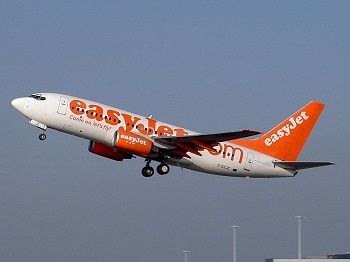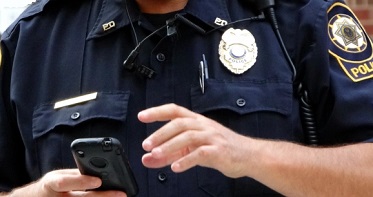New uniforms for crew have now been debuted by the U.K. airline, which are lit with LED.
New uniforms have now been released for EasyJet crewmembers to wear, which are embedded with wearable technology in the form of sensors and LED lights that are designed to offer several features and benefits.
The cabin crew now have high tech uniforms that include many features of embedded wearables.
The airline was first founded in 1995 by Sir Stelios Haji-Ioannou and is the largest airline in the United Kingdom, based on the number of passengers it carries. It is now using the company’s 20th anniversary as the opportunity for cabin crew and engineers to be able to don uniforms that have wearable technology features woven into them. Both of these types of uniforms have features such as microphones built into them. The microphones were chosen to make it possible for pilots, crew and engineers to communicate with each other.
Cabin crew uniforms also feature dots of LEDs along their shoulders among their wearable technology features.
 The LEDs indicate the flight number and the destination of the plane. The lights provide illumination along the hemlines and also offer additional lighting for visibility in case of an emergency.
The LEDs indicate the flight number and the destination of the plane. The lights provide illumination along the hemlines and also offer additional lighting for visibility in case of an emergency.
On the other hand, the wearables laden uniform meant for engineers has both LEDS and reflective panels in the hood. The idea is that the clothing itself will provide lighting to a work area so the engineers won’t be required to have to try to direct a light while trying to complete their tasks at the same time. This will leave both hands free to complete a job, replace panels, and do everything else that is required to keep aircraft in top shape.
Furthermore, built-in video cameras make it possible to send images to other engineers in order to receive a second opinion about complex problems and the best course to take in order to correct them. At the same time, barometers and air quality sensors are meant to help engineers keep up with the safety of their work environments. It even becomes possible to use this wearable technology to create air quality maps for various cities.
Denny |
November 10, 2015
Several departments have been upgrading their systems so that e-citations can be issued for traffic violations.
Issuing the traditional type of traffic ticket can take a tremendous amount of time, but with the use of mobile technology, several police departments have been making it possible to speed up the process by quite a bit.
The idea will help to save time for the officers and will make the process at least a sliver less painful for drivers.
According to the clerk of the Circuit Court for DuPage County in Illinois, Chris Kachiroubas, the average amount of time that is required for a police officer to pull over an offender, speak to him or her at the side of the road and then return to the cruiser in order to write the ticket is eighteen minutes. After that, the officer is required to send the ticket to the office of the clerk, where other employees must enter it into the system. A court date must be issued and a notice must be mailed to the offender. It takes a full 10 days before the offender will even learn what his or her court date will be. By that point, the date could be within two weeks. To speed up the process, many departments have looked to mobile technology.
Using mobile technology has made it possible to skip many of the manual processes involved in issuing tickets.
 By using mobile devices as a part of the traffic enforcement process, it becomes possible to issue e-citations. That has reduced the average amount of time required to create the ticket from having been 18 minutes to a much smaller 6 minutes, said Kachiroubas.
By using mobile devices as a part of the traffic enforcement process, it becomes possible to issue e-citations. That has reduced the average amount of time required to create the ticket from having been 18 minutes to a much smaller 6 minutes, said Kachiroubas.
The new system allows a police officer to use a handheld mobile device or laptop in order to scan the driver’s license of the person who has been pulled over. The information on the license automatically populates the digital ticket so that it does not need to be entered manually. The officer can then select the offence(s) and that information is automatically entered into the system of the police department and the country. A court date is automatically generated.
The mobile technology device of the police officer is connected to a special printer located within the cruiser so that the ticket can be printed out, including the court date for the offender.
 The LEDs indicate the flight number and the destination of the plane. The lights provide illumination along the hemlines and also offer additional lighting for visibility in case of an emergency.
The LEDs indicate the flight number and the destination of the plane. The lights provide illumination along the hemlines and also offer additional lighting for visibility in case of an emergency.
 By using
By using 